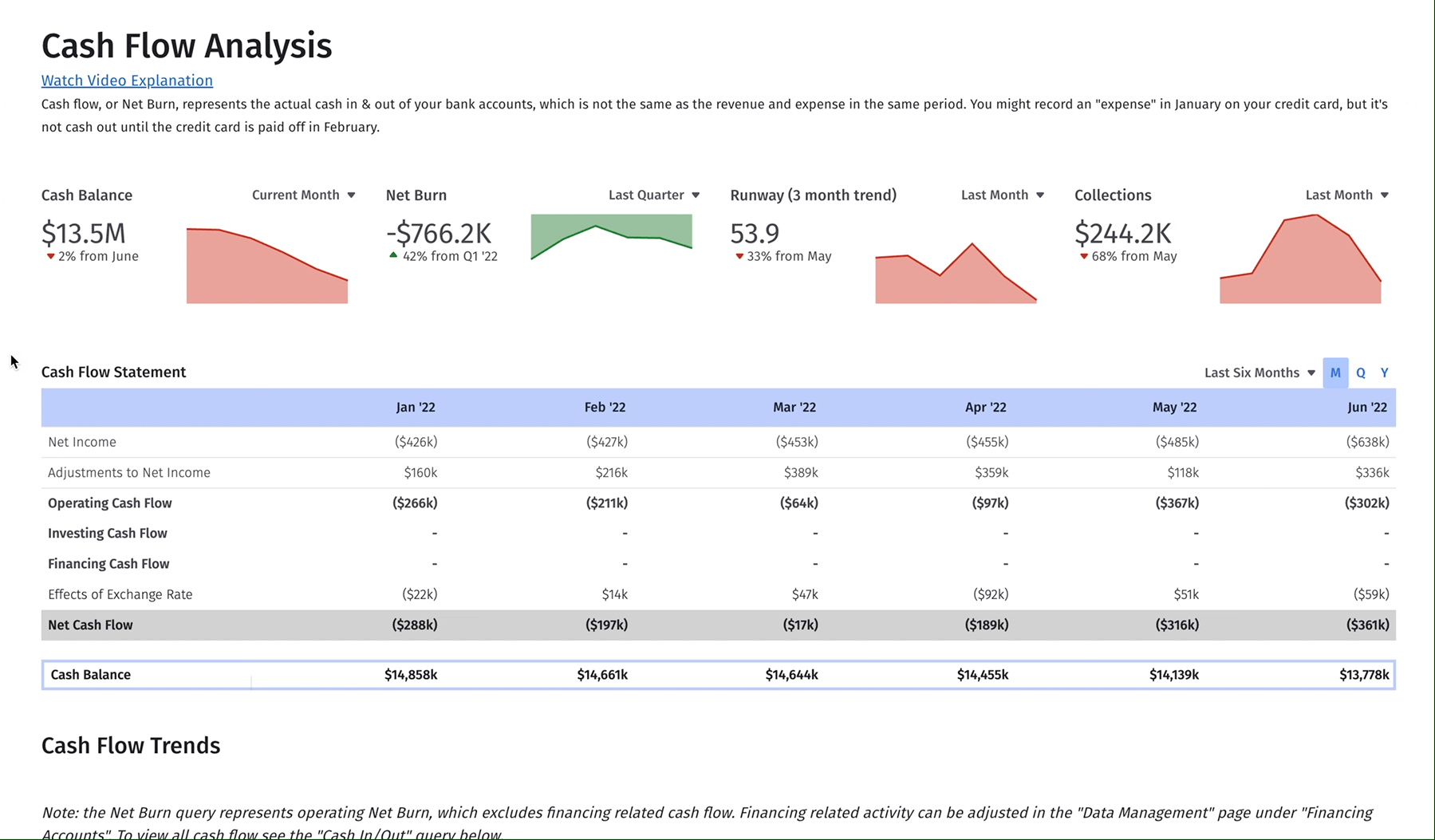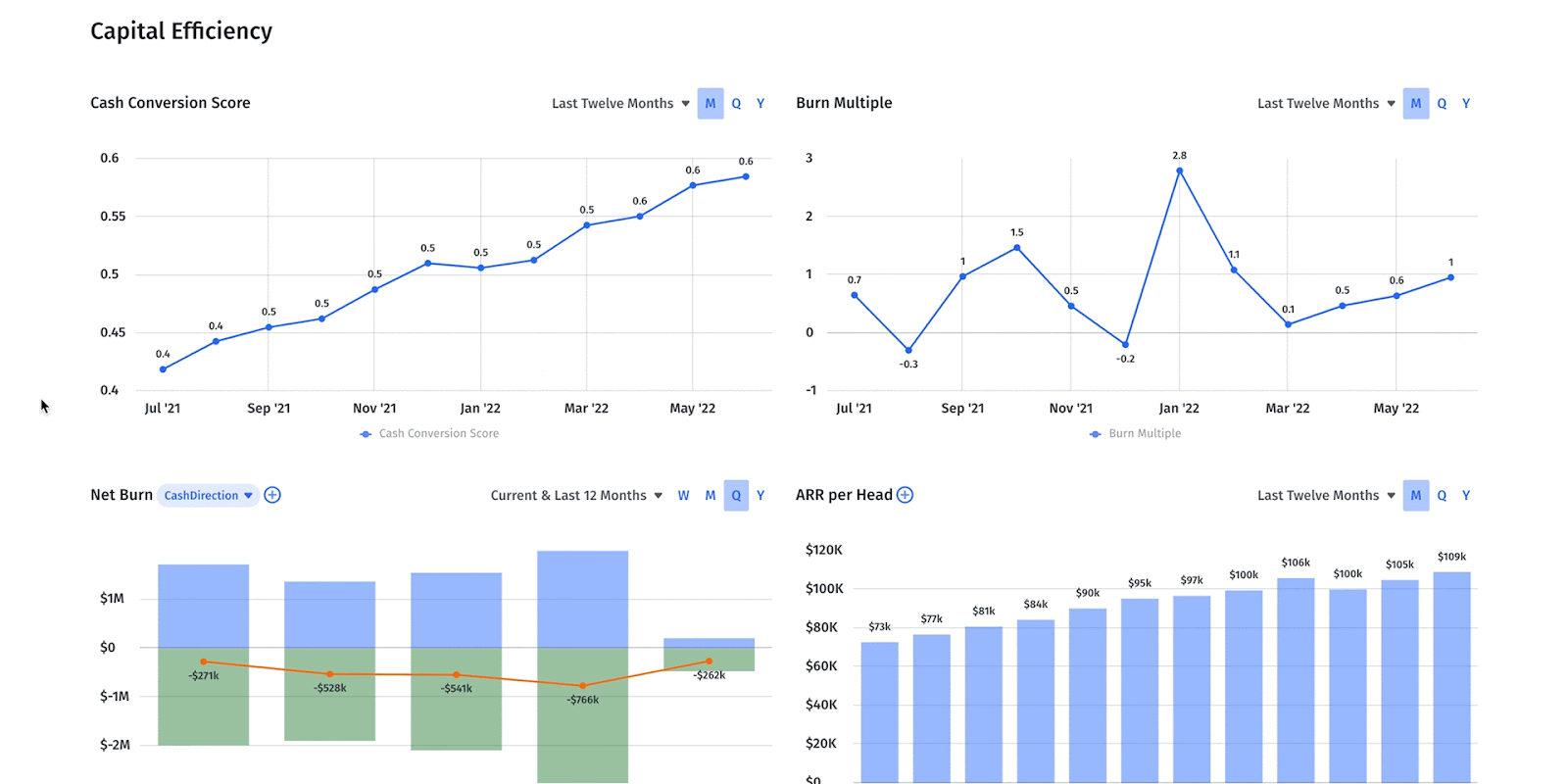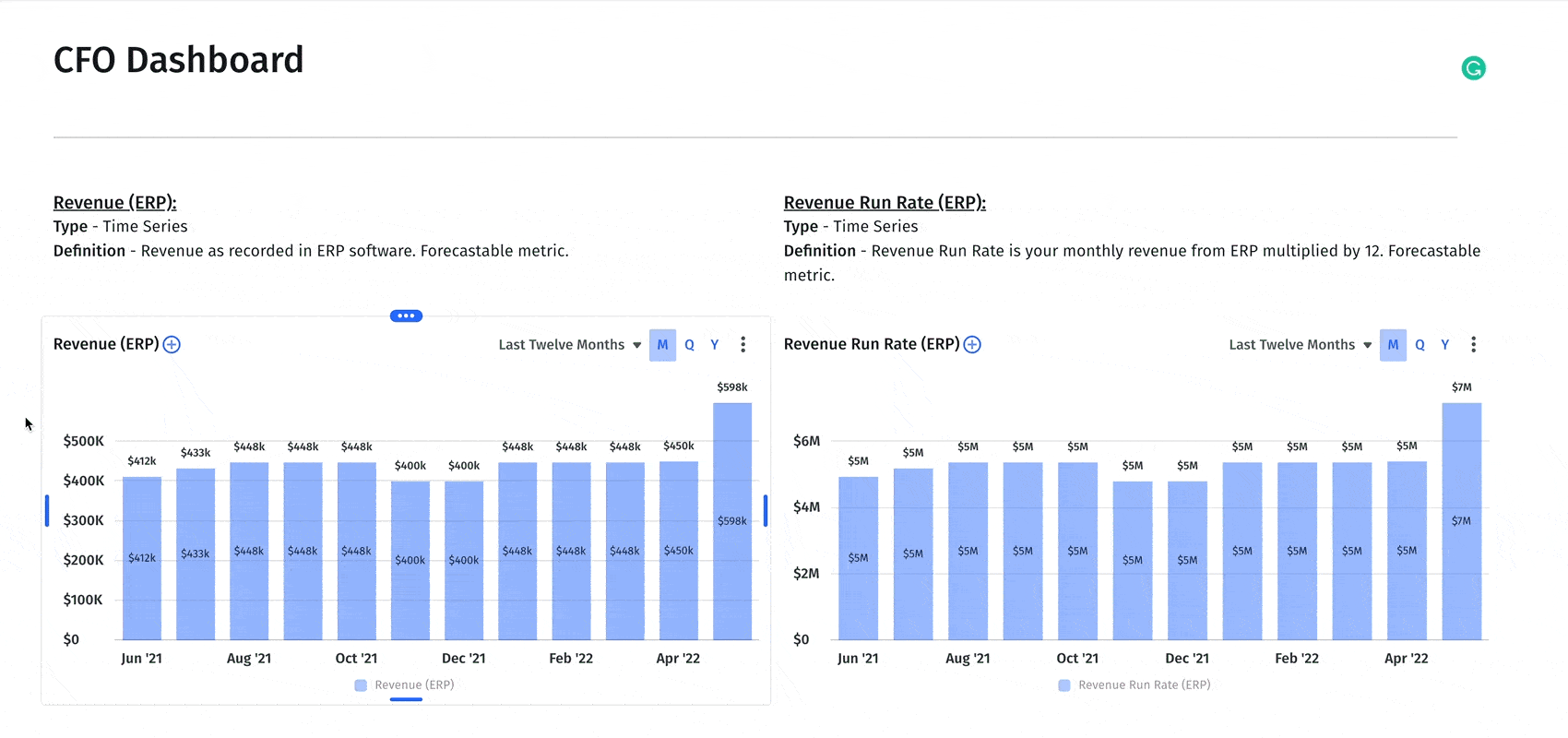By prioritizing threats based on likelihood and potential impact, you help fortify your company’s position in preparation for expansion and prime the business for sustainable growth. That’s the aim of financial risk assessment.
Table of Contents
What Is Financial Risk Assessment?
A financial risk assessment is an examination of where your business is most likely to lose value. It’s the process of identifying how and where your business is exposed to the most risk.
A company has several points where it interacts with the wider world — customer transactions, foreign currencies, regulations, and more.
Financial risk assessment means analyzing these points to determine which are the most likely to produce potential financial losses. It means identifying risks, determining how likely they are to occur, and pinpointing the potential impact on the company if they do.
But CFOs may not be able to respond to every single potential risk in existence — you’ll have to prioritize based on both likelihood and potential impact.
The main aim of financial risk assessment is to take action which reduces the likelihood of the risk occurring at all. If that’s not possible the ‘Plan B’ is to have a response prepared in case it does occur. That means a solid risk management strategy involves creating contingency plans — leveraging what-if scenario analysis for worst case circumstances and modeling your business’s reaction.
Types of Financial Risk Assessment and How To Conduct Them
There are multiple types of financial risks CFOs need to look out for. Some, like market risk, are more generally applicable, while others, like currency or liquidity risk, are more likely to affect businesses of certain types.
To begin your assessment, consider which risks are most likely to happen. Then, prioritize your responses based on probability.
Market Risk
Market risk is the risk that macroeconomic changes could damage your business’s ability to remain competitive. These are circumstances outside your control — think inflation, downturns, or, in recent years, the pandemic.
Market risk also covers more specific changes that might only affect a particular type of business — good examples would be the effect of streaming services on video rental stores or the reduction of funding availability for SaaS startups over the past few years.
To perform a market risk assessment, the first thing you’ll need is a baseline. That means understanding your company’s TAM and SAM.
TAM, or total addressable market, is the maximum amount of revenue available for the product you’re offering — it’s the big picture, total market demand. Serviceable addressable market (SAM) refers to the area within that total addressable market you can reach — it’s your potential slice of the TAM pie.
Calculating TAM and SAM depends on market research and annual contract value.
Continuously keep an eye on TAM and SAM to see if your product market fit (PMF) remains steady. If your TAM and SAM are decreasing, you’ll know you need to take a closer look at your business plan and product roadmap.
To further contextualize TAM and SAM, perform market trend analysis. Ask questions like, “What new technologies are being introduced that might affect my industry?” “Are competitors starting to introduce new features?” and “Are consumer preferences changing?”
For a more granular view, break things down by customer vertical and region.
Finally, it’s best to assess your company’s market risk in real time by tracking metrics, including customer count, sales win rate, and ARR by product line. Customer count shows the number of active customers at the end of the period, which you can trend over time.
Sales win rate shows how many deals you’re converting, meaning it can reflect larger business trends. By slicing ARR by product line, you can observe trends in specific products, which may show shifting customer preferences.
Focusing on pipeline generation can help you understand where in your pipeline customers are dropping off, revealing potential problems with your messaging or PMF.
Customer Risk
Customer risk is the risk of relying on a small customer base or customer concentration risk. What might happen if one large customer leaves? What would be the impact on your bottom line? To keep customer risk low, do your best to ensure a customer accounts for no more than 15% of your total revenue.
Calculate average revenue per user (ARPU), which will give you a picture of how much money you’ll lose if you lose a single customer. To determine the likelihood of a specific account churning, you’ll want to design a customer health score unique to your business.
As for customer risk metrics, some of the most important are retention rate and net revenue retention. How have these been trending per customer over time?
The most obvious way to respond to customer risk is by expanding your customer base. Use financial models to plan out top-line growth and the accompanying increase in headcount. Next, take steps to retain your existing customers. Employ customer success teams to communicate with customers and address their needs, or even work on securing long-term contracts.
SaaS Financial Model Template
Cash Flow Risk
Cash flow risk is the possibility that a business won’t have sufficient cash flow to cover its obligations. There are two types of cash flow risk: collections risk and liquidity risk.
Collections risk is the possibility accounts receivable go uncollected, either permanently or long enough to have an effect on working capital. When evaluating collections risk, your most important metric will be days sales outstanding (DSO) or average collection period. You’ll also want to keep an eye on customers who have a high average days delinquent (ADD). You can then flag accounts with similar behaviors to proactively target collections risk.
Bad debt refers to ARs you don’t expect to collect. You can see how common these are with a bad debt to sales ratio. To lower collections risk, leverage automated AR processes. If your cash runway is short, you might even offer discounts for early payments. Use AR aging to segment customers based on their likelihood to pay.
Collections risk also covers credit risk — the risk that, when you extend credit to customers, they default. To address credit risk, evaluate creditworthiness before transacting.

Liquidity risk is concerned with assets and liabilities — your balance sheet. How liquid are your cash assets? What if you suddenly needed to extend your cash runway? To manage liquidity risk, you’ll need to constantly keep your cash runway and net burn rate in view. Understand shifts in working capital, and regularly run cash flow forecasts.
Operational Risk
Operational risk refers to the risk that comes with day-to-day operations. It covers factors like human error, fraud, and compliance, as well as operational disruptions (for example, supply chain disruptions).
To minimize human error, you’ll need a strong culture of standardized workflows and operational procedures. Additionally, you might leverage automation for processes like data entry. Preventing fraud means having firm internal controls in place. Regularly conduct internal audits and reviews, and practice segregation of duties. Keep on top of regulatory changes relevant to your business.

Evaluate specific operational “weak points.” For instance, do you rely on a small number of suppliers? What if there was a disruption with just one of these suppliers?
For operational risk, there are no specific metrics. Your main evaluator will be professional skepticism. Watch out for one time expenses — vendor spend in particular often tends to go uncategorized. Make sure you have tools in place to identify which expenses are vendor spend and which need a closer look.
Currency Risk
Currency risk is the possibility that you’ll lose value in your functional currency as a result of unfavorable exchange rate fluctuations. To address currency risk, the first thing you’ll need to do is perform a thorough assessment of allocation.
How much of your total liquidity is being held in foreign currencies? Are these currencies that often fluctuate against your functional currency? To avoid currency risk, you can denominate your foreign contracts in USD, which is relatively stable. Revalue foreign currencies at the end of every period to get a valid picture of your company’s financial situation and comply with tax laws.
Ensure proper language is in your contracts, with clear payment terms in regard to currency type, and renegotiation clauses in case of severe volatility.
Leverage natural hedging if possible, which means matching expenses in a specific currency with the amount you hold in that currency. Another strategy involves using foreign exchange contracts. These lock in at a specific, favorable exchange rate for a future transaction.
How Technology Can Help Mitigate Financial Risk
Your business is a combination of moving pieces that continuously interact with the wider world. Once you’ve identified threats and put risk mitigation strategies in place, the best way to manage risk is to monitor company performance in real time.
Mosaic integrates your three financial statements along with your enterprise software to provide a single source of truth for FP&A teams.
By building benchmarks for specific, relevant metrics, and viewing how you’re tracking against them, you know when to sound the alarm for a specific risk. For example, if your bad debt to sales ratio is increasing, you’ll know to step up customer success efforts.
An important part of financial risk management is to prioritize which risks are most pressing. Based on those risks, you can then build individualized CFO dashboards that provide a constant view of the most relevant metrics.

Building forecasts or projections in Mosaic helps alert you to potential risks long before they occur. For instance, continuously updated cash flow forecasts can help you avoid liquidity shortfalls, while rolling forecasts help you stay continuously aligned with goals.
What-if scenario analysis can help you determine how important a specific risk factor is. For example, if you do depend on a small customer base, what would your cash runway look like if you were to lose a specific account? What if one of your suppliers were disrupted?
AI completes the picture. One use case is in addressing operational risk — specifically, AI for finance is great at flagging anomalies and detecting fraud.
Beyond Risk Assessment: Strategic Decision Making With Mosaic
To get the most out of financial risk assessment, the modern CFO should leverage technology that tracks metrics connected to the most pressing risks. Protecting your business from risk, though, is just the first step of a broader financial analytics strategy.
The second step? Using data-based forecasts and projections to plan how your company will grow over time. Headcount modeling, sales capacity planning, and cash flow forecasting all come together to chart out a clear path to sustainability.
What-if scenario analysis is used, not only to see what the effect of specific worst-case scenarios would be, but also to test strategic plans before you execute them.
Get your foundation in place by performing a thorough, metric-based financial risk assessment today. From that springboard, you can then leap for growth in a way that meets your company’s risk appetite. Request a demo to see how Mosaic can help.
Financial Risk Assessment FAQs
How does Mosaic's platform assist in financial risk assessment?
One of the best ways to perform a thorough assessment of your company’s exposure to risks is by viewing relevant metrics (for instance, to assess collections risk you’ll want to view days sales outstanding and average days delinquent). By integrating with your enterprise systems, Mosaic provides a continuous, real-time view of these metrics in streamlined financial dashboards.
With what-if scenario analysis, you can also view the potential impact of certain risks, which helps you understand which to prioritize.
Who should conduct a financial risk assessment?
What should a new CFO prioritize in their initial risk assessment?
Own the of your business.

